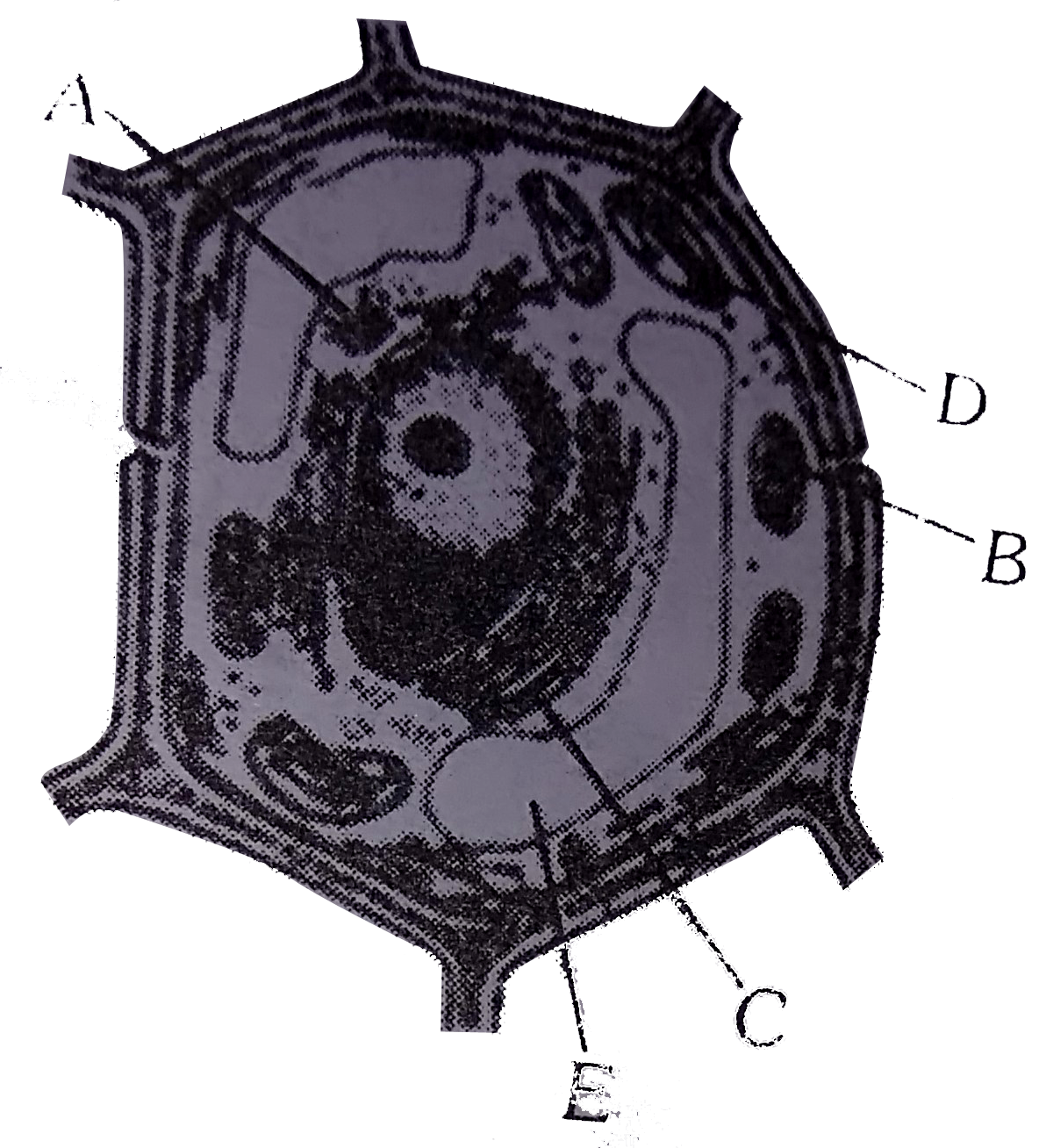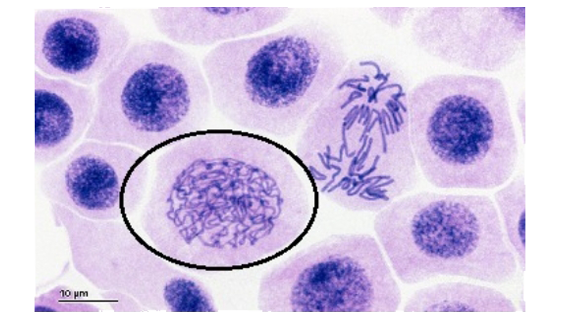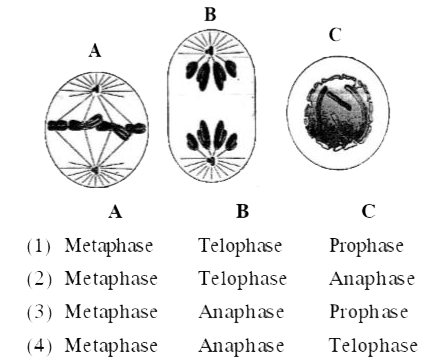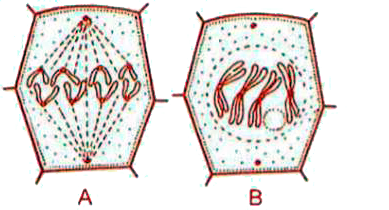Identify the phase at which most organelles duplicates
M-phase
G1 phase
G0 phase
G2 phase
The correct Answer is:B
To identify the phase at which most organelles duplicate, we can analyze each option provided in the question:
1. Option A: M phase
- The M phase, also known as the mitotic phase, is when cell division occurs. This includes karyokinesis (division of chromosomes) and cytokinesis (division of cytoplasm). However, during this phase, there is no duplication of organelles, DNA, or RNA. Therefore, this option is incorrect.
2. Option B: G1 phase
- The G1 phase, or gap 1 phase, is the first phase of interphase. During this phase, the cell grows and synthesizes proteins necessary for DNA replication. Importantly, most organelles duplicate during this phase. Thus, this option is correct.
3. Option C: G0 phase
- The G0 phase is known as the inactive or resting phase. In this phase, the cell has exited the cell cycle and lost its ability to divide. While metabolic activities may still occur, organelle duplication does not take place. Therefore, this option is also incorrect.
4. Option D: G2 phase
- The G2 phase is the second gap phase that occurs after DNA has been replicated. During this phase, the cell prepares for mitosis, synthesizing RNA and proteins. However, it is primarily a preparatory phase and does not involve significant organelle duplication. Thus, this option is incorrect as well.
Based on this analysis, the correct answer is Option B: G1 phase, where most organelles duplicate.
- The M phase, also known as the mitotic phase, is when cell division occurs. This includes karyokinesis (division of chromosomes) and cytokinesis (division of cytoplasm). However, during this phase, there is no duplication of organelles, DNA, or RNA. Therefore, this option is incorrect.
- The G1 phase, or gap 1 phase, is the first phase of interphase. During this phase, the cell grows and synthesizes proteins necessary for DNA replication. Importantly, most organelles duplicate during this phase. Thus, this option is correct.
- The G0 phase is known as the inactive or resting phase. In this phase, the cell has exited the cell cycle and lost its ability to divide. While metabolic activities may still occur, organelle duplication does not take place. Therefore, this option is also incorrect.
- The G2 phase is the second gap phase that occurs after DNA has been replicated. During this phase, the cell prepares for mitosis, synthesizing RNA and proteins. However, it is primarily a preparatory phase and does not involve significant organelle duplication. Thus, this option is incorrect as well.
Topper's Solved these Questions
- CELL CYCLE AND CELL DIVISION BOOK - AAKASH INSTITUTE ENGLISHCHAPTER - CELL CYCLE AND CELL DIVISION EXERCISE - Assignment (SECTION - A ) (Objective type Questions )
50 Videos
- CELL CYCLE AND CELL DIVISION BOOK - AAKASH INSTITUTE ENGLISHCHAPTER - CELL CYCLE AND CELL DIVISION EXERCISE - Section - B
35 Videos
- CELL CYCLE AND CELL DIVISION BOOK - AAKASH INSTITUTE ENGLISHCHAPTER - CELL CYCLE AND CELL DIVISION EXERCISE - Try Yourself
30 Videos
- BREATHING AND EXCHANGE OF GASES BOOK - AAKASH INSTITUTE ENGLISHCHAPTER - BREATHING AND EXCHANGE OF GASES EXERCISE - ASSIGNMENT SECTION - D
11 Videos
- CELL:THE UNIT OF LIFE BOOK - AAKASH INSTITUTE ENGLISHCHAPTER - CELL:THE UNIT OF LIFE EXERCISE - Try Yourself
26 Videos
Similar Questions
Knowledge Check
Which organelle releases oxygen?
AChloroplastBMitochondrionCGolgi apparatusDRibosomeDuring binary fission in Amoeba which of the following organelles is duplicated ? a) plasma membrane b) nucleus c) contractile vacuole d) all of these
APalsma membraneBNucleusCContractile vacuoleDAll of these
The diagram of the ultranstructure of a plant cell is given below. Identify the functions of the organelles labelled. A,B,C,D,E in the diagram

View SolutionOf which cell organelle is grana a part ?
View SolutionChromatin fibres duplication, Genetic material -4C, Histone protein synthesis, Membranous organelle duplication, DNA replication, centriole duplication.
How many of the above features are associated with synthesis phase of cell cycle ?
View SolutionIdentify the circled phase of cell division .

View SolutionIdentify the phases of mitosis from given diagrams :-

View SolutionWhich cell organelles release oxygen :-
View Solution

